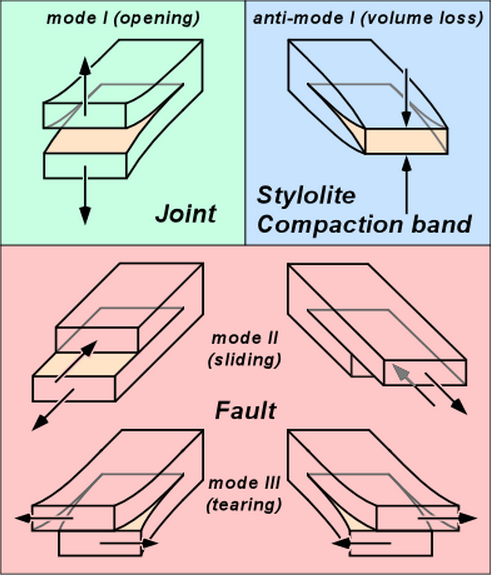Fractures - To be fair, we are all guilty of bandying the term around, commonly with little regard to the definition.
A good definition of a fracture is given by Haaken Fossen in his text Structural Geology, who states that a fracture is ‘any planar or subplanar discontinuity that is very narrow in one dimension compared to the other two and forms as a result of external (e.g. tectonic) or internal (thermal or residual) stress’. Fractures are associated with discontinuities in displacement and mechanical properties.
Another good point, made by Alfred Lacazette’s on his website Al Lacazette’s NaturalFractures.com, is that ‘The statement "that feature is either a fracture or a fault" is exactly equivalent to saying "that animal is either a dog or a poodle" because fracture is a general term for any type of brittle failure and a fault is a specific type of fracture’.

From NaturalFractures.com
As such, there are a number of different fracture types and subtypes, including Joints, Faults, Fault Zones, Deformation Bands, Compaction Bands, and Stylolites (see Al Lacazette’s website for a more complete discussion of these). Fractures that open up include Joints, Fissures (fractures filled with air or fluid), Dykes (fractures filled with magma and its products), and mineral-filled Veins.
If we digress to the rock mechanics and material science literature, we find that fractures are commonly referred to as cracks. In recent years, a number of geologists have persisted in calling crustal-scale fractures ‘cracks’, although the reason seems more to be one of saying something different rather than referring to these structures as faults and shear zones.
So, in short, the term ‘fracture’ covers a myriad of discontinuities. Too easy!
---